Solving a Cold Case: the Bird Droppings Mystery
'Bird droppings can pose a significant threat for monuments, outdoor statues ... and brand new cars', says Dr. Geert Van der Snickt, cultural heritage scientist at the University of Antwerp. 'But I did not associate it with easel paintings, and certainly not with quintessential masterpieces that are valued over 100 million dollars. This somewhat unexpected substance illustrates why the interface of art and science keeps me spellbound. Solving the mystery of the bird droppings on the Scream also demonstrates why our discipline has much equipment in common with forensic experts. Like forensics, the field of cultural heritage science is characterised by a rapid introduction of improved, state-of-the-art techniques and this allows us bringing to light completely new information on iconic works of art, even though they have been under the magnifying glass of researchers for decades'.
'In the final years of the nineteenth century, Edvard Munch made four versions of the Scream, a painting that is nowadays considered as vital for the later development of Expressionism' explains Dr Nils Ohlsen, Director of Old Masters and Modern Art at the National Museum in Oslo. As such, the Scream has become an icon of the European art canon. Although one of the versions was sold in 2012 for a staggering 119 million dollars, the most renowned version is undoubtedly the painting that is part of the collection of the Norwegian National Museum. This work differs from the others not only in the fact that it is considered as the earliest version, but also because it features a series of enigmatic white splatters on the surface.
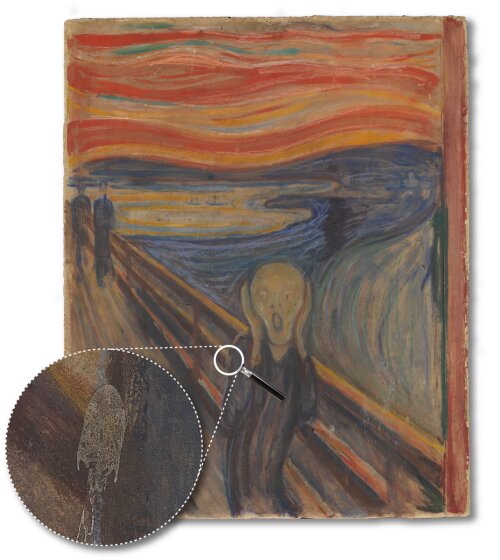
It is known that Munch painted several of his large drafts outdoors and that he liked to expose his paintings to the forces of nature. As seen on the right, photographs were conserved showing the artist in the snow midst a series of paintings, merely sheltered by a wooden shed. The painting entered the National Museum's collection directly from the artist's studio and the white splatters have always been present. All of this resulted in a theory that Munch would have left the Scream outside and that birds flying by literally added another layer of meaning to Munch's Masterpiece.
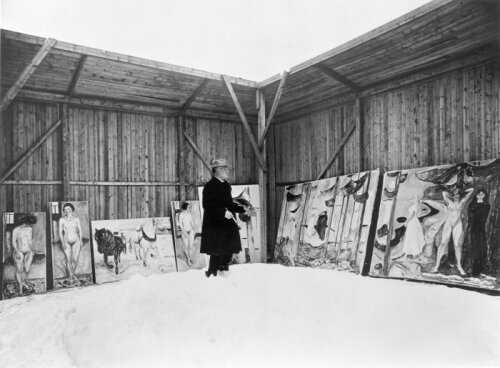
Above: Edvard Munch posing with paintings outdoors at Ekely (near Oslo)
Prof. Tine Frøysaker (University of Oslo) has been recurrently confronted with bird excrements in the Norwegian 'Stave' churches where she worked throughout her career as conservator. She is less convinced by this theory as the white spots do not look anything like bird droppings under the microscope. Thierry Ford, Paintings Conservator at the National Museum, subscribes to that opinion as 'bird excrements are known to have a corroding or macerating effect on many materials, a statement that most car owners can confirm'. While In this case, the white substance seems to lie on top of the paint. Moreover, in some areas, the white matter seems to have flaked off through the years without leaving any sign of damage. A last technical argument opposing this theory is the fact that Munch employed a cardboard substrate to paint the Scream, a material that is particularly fragile and hygroscopic and would have suffered severe damage when left outdoors.
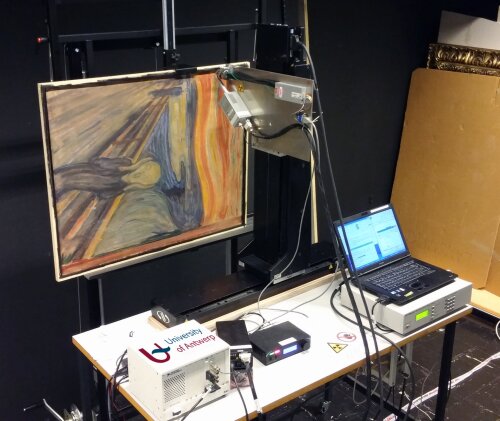
Above: MA-XRF scanning in progress in the conservation studio of the Nasjonalmuseet
'It seemed more plausible that the splatters were actually white paint or chalk that had accidently dripped on to the Scream while Munch was working on other paintings in his studio', says prof. Tine Frøysaker. However, in spite of logic arguments, urban legends can prove hard to erase especially as this aspect of the national treasure would dovetail nicely with the Norwegian spirit of nature-bonding. In May 2016, Frøysaker invited the Antwerp team to Oslo with the aim of characterising the painting materials and techniques used by Munch. According to Dr Geert Van der Snickt, the bird droppings were certainly not the primary aim, 'but it would have been a mistake not to exploit the passage of the Antwerp state-of-the-art equipment to try and settle the long standing bird droppings dispute'. The Scream was therefore submitted to the renowned Macro X-ray fluorescence scanner (MA-XRF), an instrument developed by the AXES research group that supplied pivotal arguments for many pending issues concerning key works of art by Van Eyck, Rubens, Van Gogh, etc. Surprisingly, these non-invasive scans ruled out the readiest paint option as no white pigments nor calcium was detected inside the enigmatic smudges.
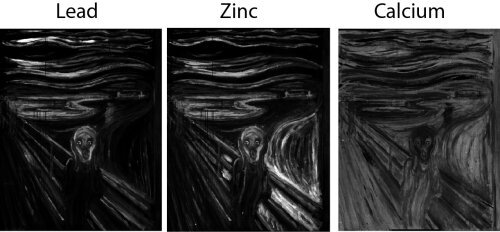
Above: MA-XRF images, each showing the distribution of one chemical element over the paint surface
Undaunted by this negative result, the interdisciplinary team decided to take the research to the next level by extracting a micro sample from the white stains. This tiny sample was then analysed at the DESY synchrotron facilities in Hamburg (P06, PETRAIII) by the Antwerp team. The introduction of particle accelerators for the investigation of paint materials has caused a revolution in our understanding of how historical paint systems behave', says chemistry professor Koen Janssens. 'In the last few years, we were able to unravel various complex chemical degradation processes that cause paintings to discolour or flake, knowledge that will eventually lead to an improved conservation.' PhD student Frederik Vanmeert who analysed the sample at the micro scale using X-ray diffraction had a surprise in store. 'I immediately recognised the diffraction pattern of wax as I encountered this material several times upon measuring paintings'. In the past, unstable paintings were often impregnated with bees wax (or a similar waxy material) in order to consolidate flaking paint or to attach a new canvas to the back of a degraded old one. In this case, it is most likely that the white spots are in fact splatters of molten wax that accidently dripped from a candle in Munch's studio.
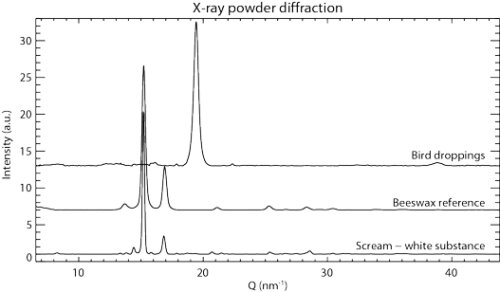
...and what about the bird droppings? 'Initially, I planned to go sightseeing on my last day in Oslo', recalls Geert Van der Snickt. 'It turned out that I spent most of my time looking down, searching for bird droppings on the ground that could serve as reference material. After some time, I found a perfect specimen right in front of the opera building. I must admit I was a little embarrassed collecting this sample material in front of groups of tourists. For a second sample, I decided to look for a more quiet place, around the castle'. The spectra collected from these samples are shown above. Even a layman can see that the XRD pattern of the Munch sample matches the pattern of the beeswax reference, while it is completely different from the one recorded on the real bird droppings. 'It is true that the bird droppings that I collected in the streets of Oslo can hardly be considered as a statistical relevant sounding and that the composition of droppings is strongly dependant of the nutrition of the bird, but I sincerely doubt that Munch's painting was sprayed by birds that happened to be fond of wax', concluded Geert Van der Snickt. As such, I think we can close the case on the bird droppings.
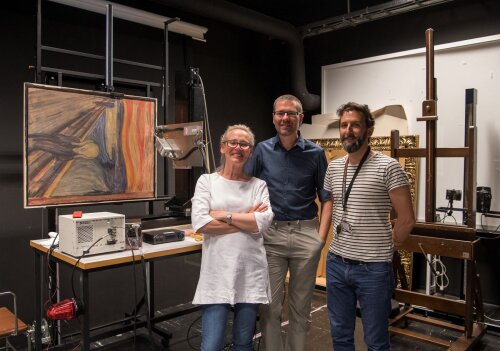
Above: (from left to right) Prof. Tine Frøysaker, Dr. Geert Van der Snickt and Thierry Ford
Partners
University of Antwerp:
- Dr Geert Van der Snickt | +32 494 62 44 73 | geert.vandersnickt@uantwerpen.be
- Dr Frederik Vanmeert
- Dr Stijn Legrand
- Prof. Dr Koen Janssens | +32 474 46 55 32 | koen.janssens@uantwerpen.be
Nasjonalmuseet Oslo:
- Thierry Ford
- Dr Nils Ohlsen
University of Oslo:
- Prof. Tine Frøysaker
- Prof. Noëlle Streeton
DESY - PETRA III:
- Dr Gerald Falkenberg
- Dr Jan Garrevoet
Flemish newscast on MA-XRF scans on The Scream by Munch (VRT Journaal 25 Aug 2016)
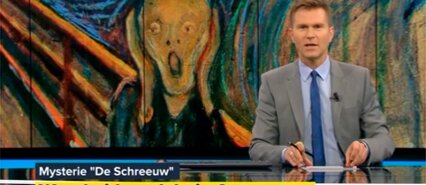
Picture gallery
-
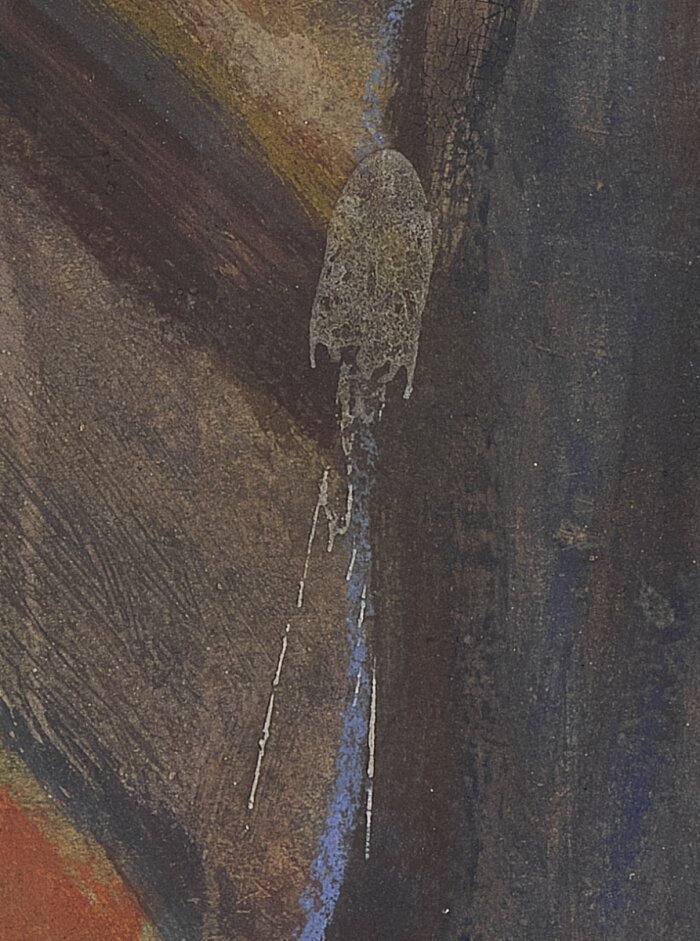 Detail of one of the enigmatic splatters, i.e. on the left shoulder of the figure
Detail of one of the enigmatic splatters, i.e. on the left shoulder of the figure -
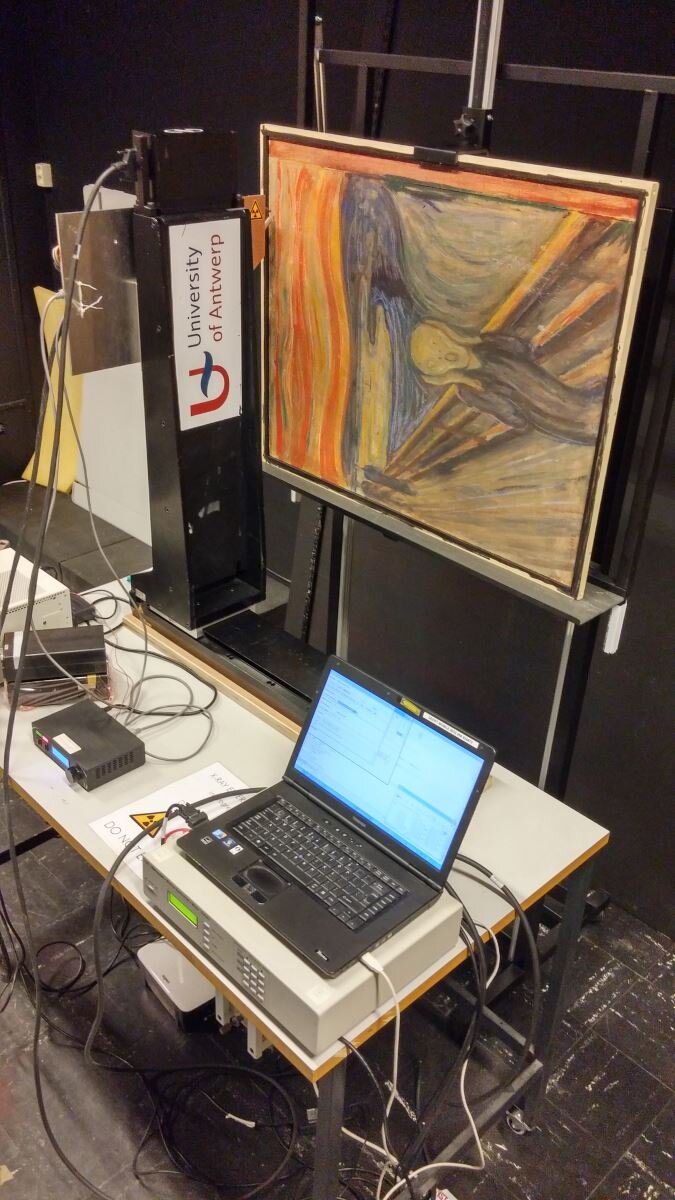 MA-XRF scanning in progress
MA-XRF scanning in progress -
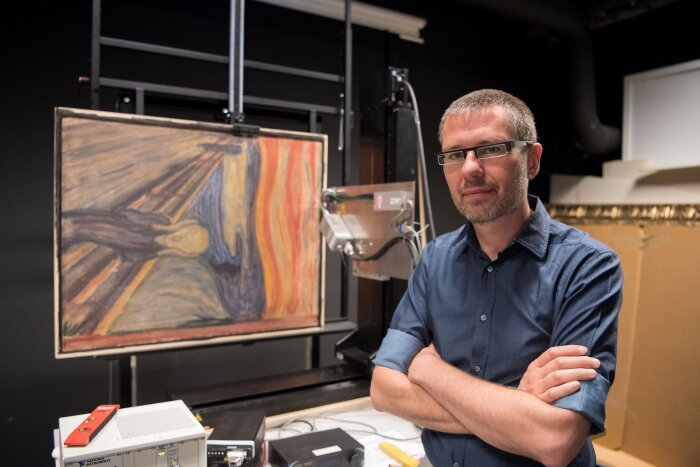 Dr Geert Van der Snickt in front of the setup
Dr Geert Van der Snickt in front of the setup -
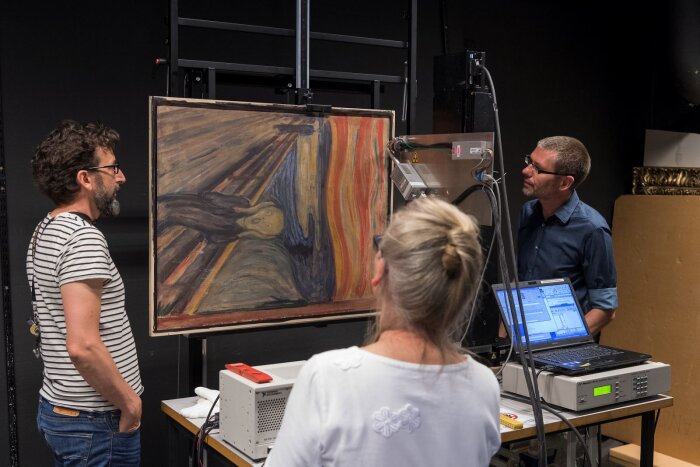 Paintings Conservator Thierry Ford, Prof. Tine Frøysaker and Dr Geert Van der Snickt during the MA-XRF scanning experiment
Paintings Conservator Thierry Ford, Prof. Tine Frøysaker and Dr Geert Van der Snickt during the MA-XRF scanning experiment -
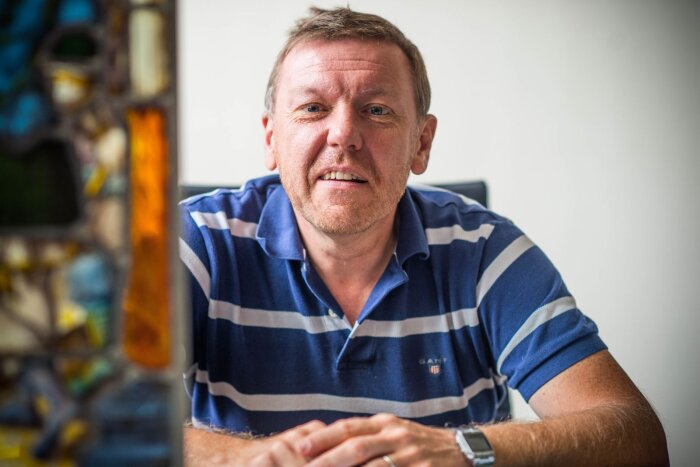 Prof. Dr Koen Janssens
Prof. Dr Koen Janssens -
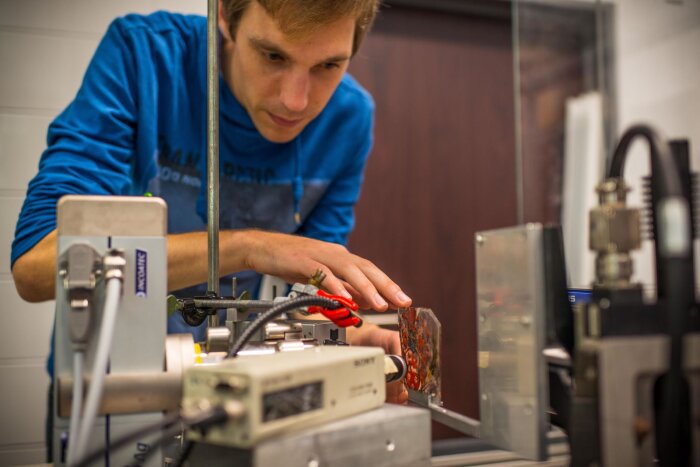 Frederik Vanmeert performing µ-XRD measurements in the X-ray lab of the University of Antwerp
Frederik Vanmeert performing µ-XRD measurements in the X-ray lab of the University of Antwerp -
 PETRA III: the high brilliance 3rd Generation Synchrotron Radiation Source at DESY. With a circumference of 2.3 km PETRA III is the biggest and most brilliant storage ring light source in the world.
PETRA III: the high brilliance 3rd Generation Synchrotron Radiation Source at DESY. With a circumference of 2.3 km PETRA III is the biggest and most brilliant storage ring light source in the world. -
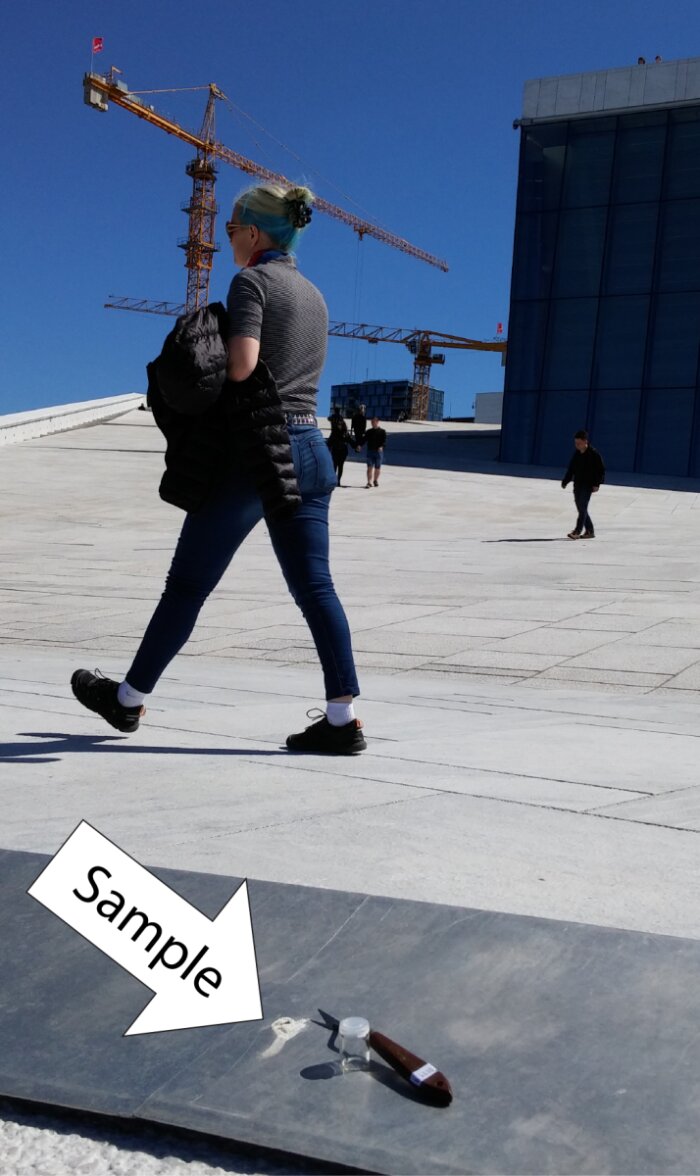 Collecting real bird droppings as reference material in front of the Opera building in Oslo.
Collecting real bird droppings as reference material in front of the Opera building in Oslo. -
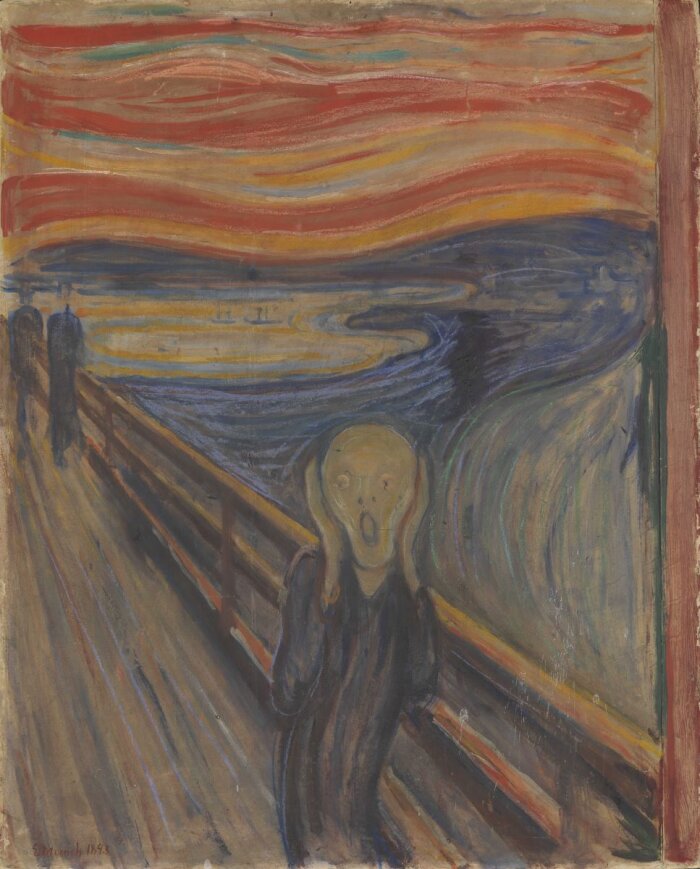 The Scream
The Scream